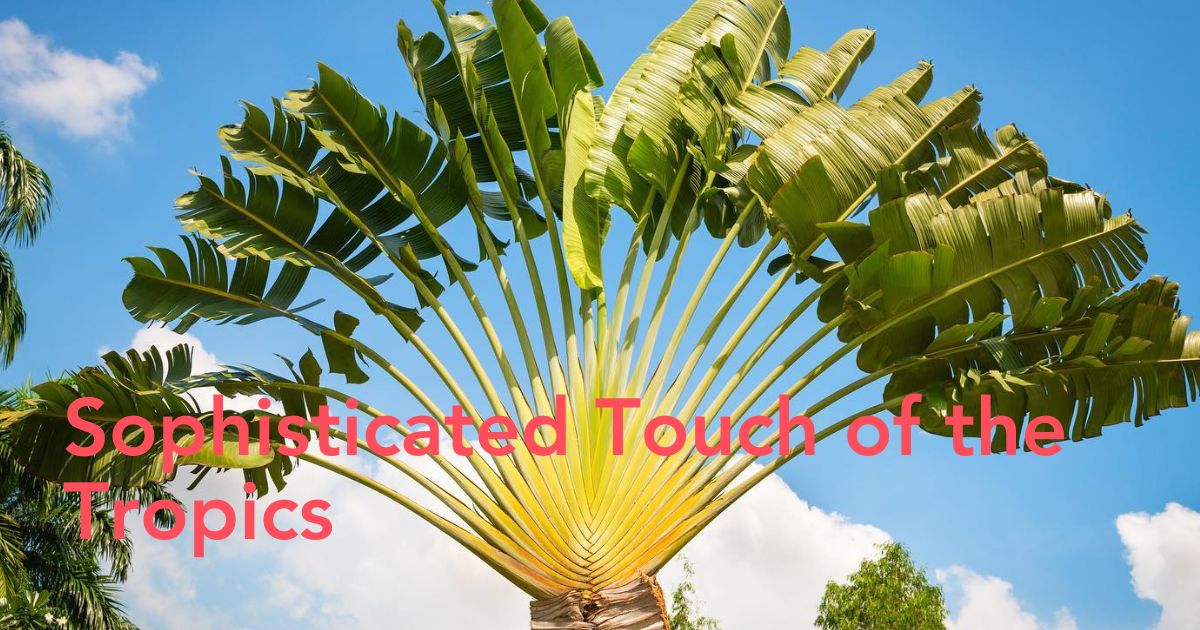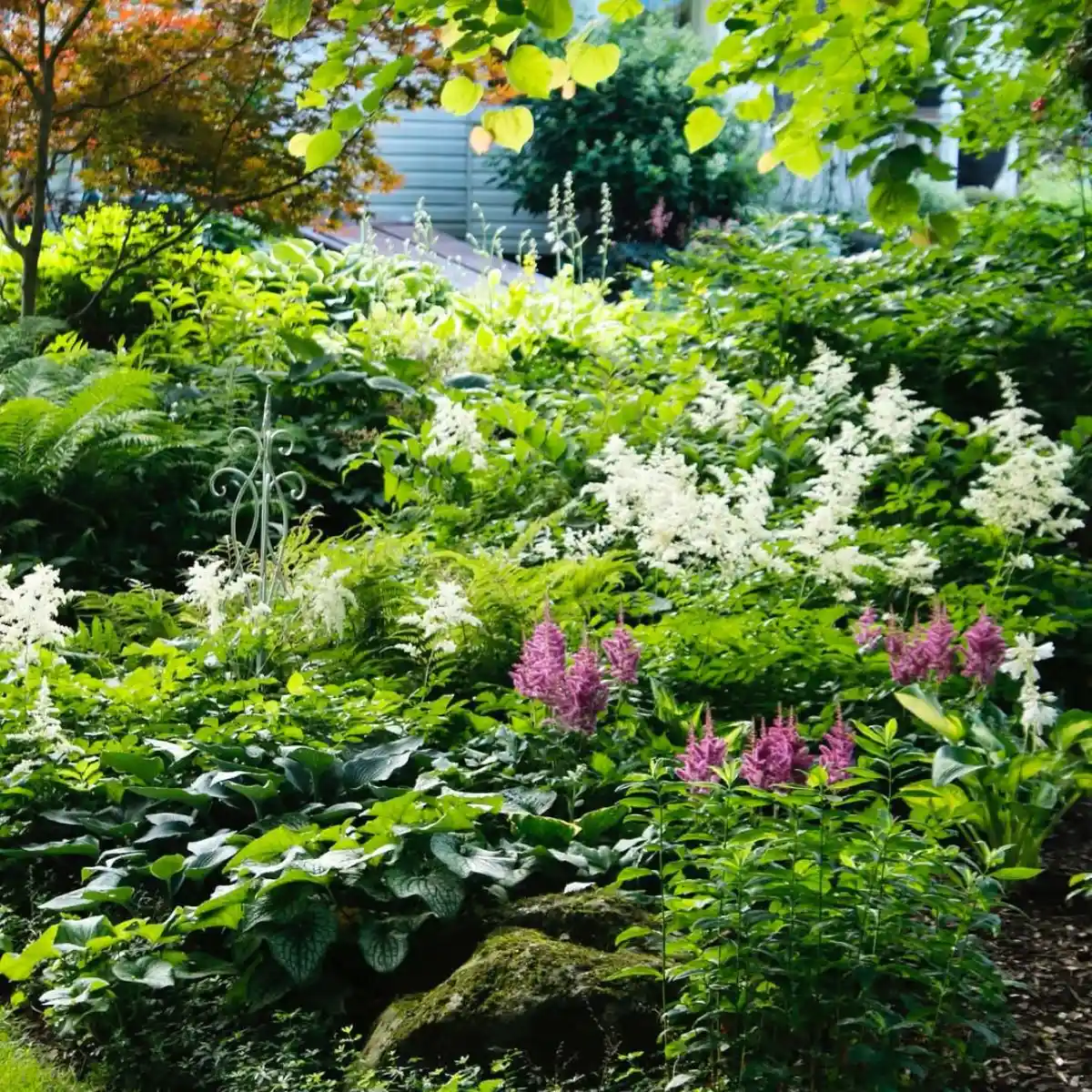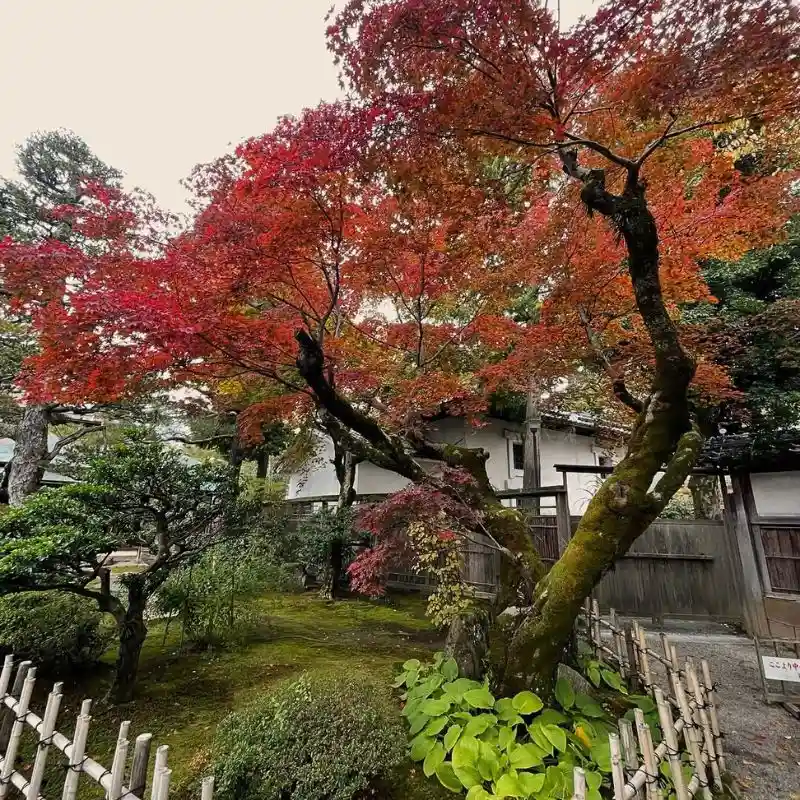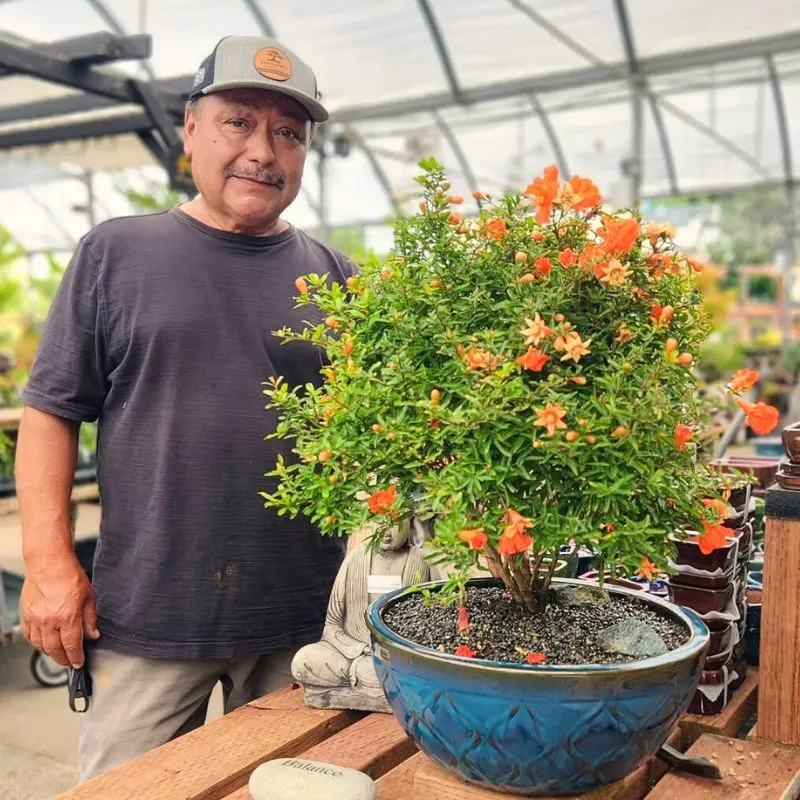The Travelers Palm, scientifically known as Ravenala madagascariensis, embodies the essence of lush tropical panache, offering unlimited beauty that transforms any landscape. This towering marvel, with its fan-shaped formation and huge leaves sprouting from long stems, serves as a striking focal point in gardens.
Ravenala madagascariensis is a versatile plant that demands attention in its initial stages but rewards growers with minimal fuss once established. Its majestic presence provides a touch of the tropics, making it a sophisticated addition to indoor or outdoor spaces. In the following sections, you'll discover the secrets to growing, caring for, and propagating this iconic tree, ensuring your garden thrives in excellent condition with the timeless grace of the Traveler's Palm.

The Meaning Behind Travelers Palm Name
Despite its name, the Traveler's Palm is not a true palm. Instead, it belongs to the Strelitziaceae family, which includes the Bird of Paradise. Ravenala madagascariensis, a species native to Madagascar, derives its name from a practical feature: its leaf bases collect rainwater, providing an emergency drinking supply for the lost and parched traveler. This unique ability to store water is not only crucial for survival in the tropics but also symbolizes resilience and adaptability.
As a result, the Travelers Palms have become a symbol of welcome and hospitality, often planted at the entrance of homes to anchor spiritual energy. Its association with strength and endurance, alongside its graceful form, makes it a paradise for weary travelers seeking refuge and a reminder of nature's generosity.
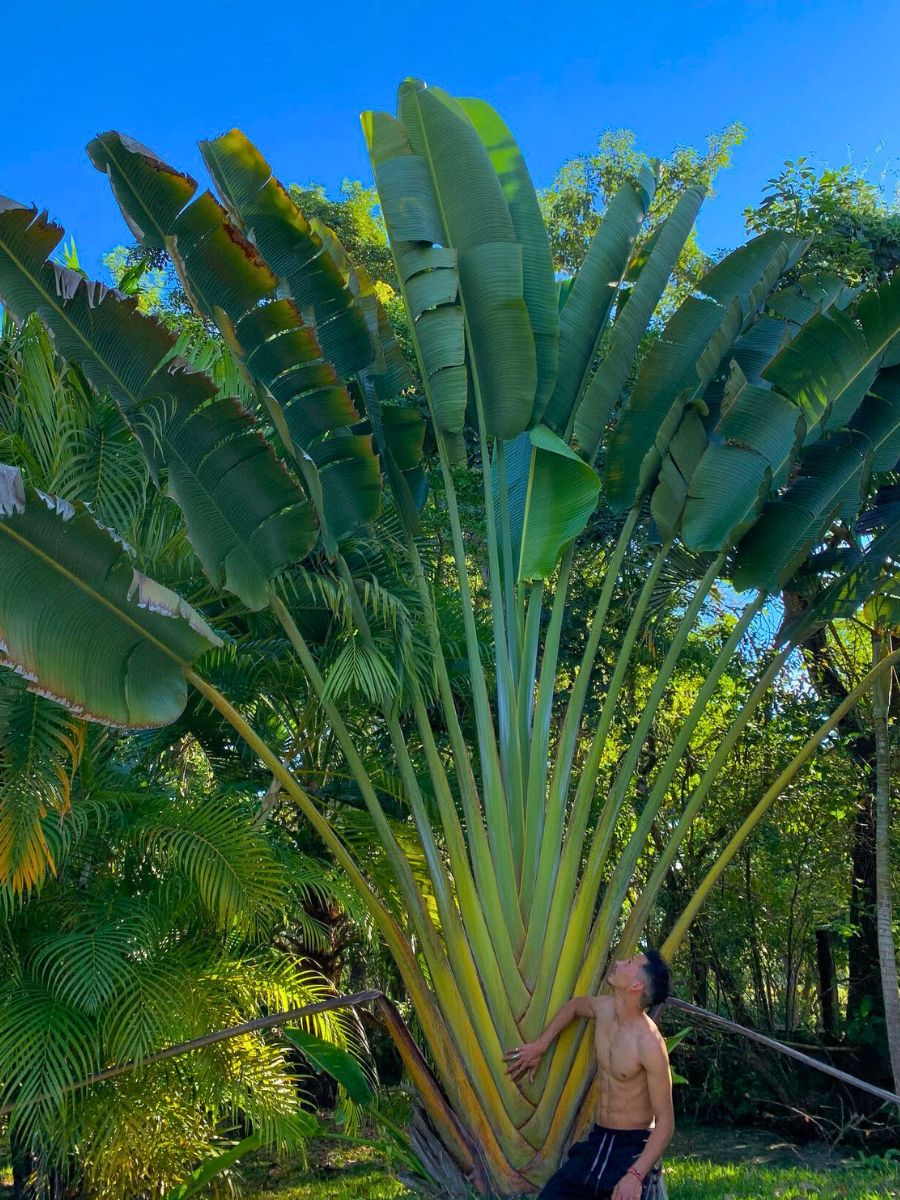
Growing and Caring Guide of the Travelers Palm Tree
Cultivating the Traveler's tree requires attention during its early stages. When planning the planting of your Ravenala madagascariensis, ensure you choose a location that can accommodate its tall stature and expansive growth. The tree can reach impressive heights of up to 15 meters (50 feet) with a spread of 4-6 meters (15-20 feet).
With proper planting and by providing the right environment, you ensure your Traveler's Palm thrives and reaches optimum growth and height.

Travelers Tree Care - Climate
The Traveler's Palm thrives in tropical and subtropical climates, particularly within USDA zones 10 and above. Ravenala madagascariensis prefers warm and humid conditions, making it well-suited to areas like South Florida. While it can tolerate brief cold spells, extended exposure to low temperatures poses a major concern for the plant's health.
During winter, protective measures, such as covering the tree, help safeguard against potential damage. This species is naturally sensitive to cooler climates, and high winds can affect its branches, so strategic positioning is key for maintaining excellent conditions. By cultivating the Traveler's Palm in its preferred climate, you promote healthy growth and vibrant foliage.
As a suggestion, here are some more ideas of flowering plants you can add to uplift your garden space into a tropical paradise.
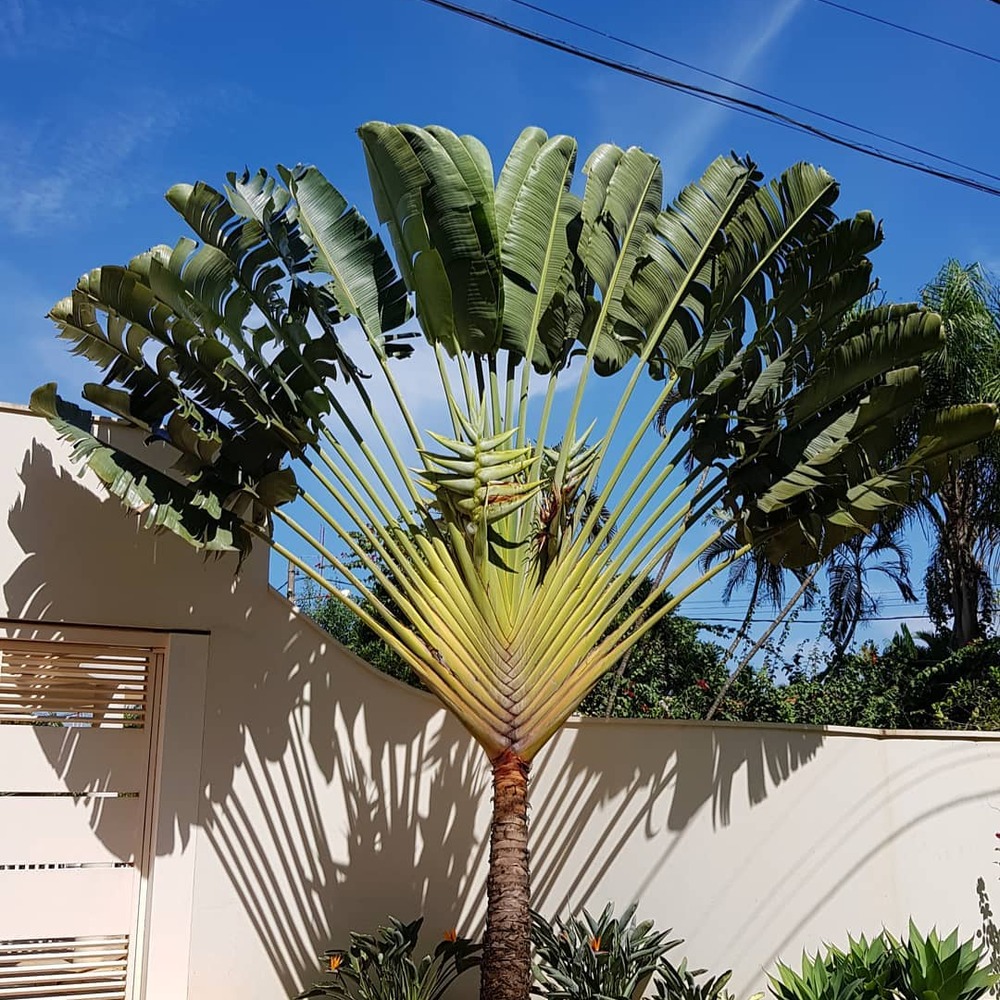
Travelers Tree Care - Location and Light
For optimal growth, plant your Traveler's Palm in a location where it can bask in full sun. During its youth, however, protect it from intense sunlight to prevent damage to its delicate leaf stalks. Once established, the Traveler's Palm flourishes in full sun and bright light conditions.
Consider positioning it near taller plants or trees to serve as windbreakers, as strong gusts can damage its fan-shaped leaves. Its east-west direction alignment ensures maximum sunlight exposure, enhancing its growth rate. By selecting a suitable location with appropriate light, you'll enable your Ravenala madagascariensis to grow and thrive naturally in its new home.
If you are looking for a more such list of houseplants that can live in low light conditions, here is a list of 10 such plants that thrive in no-to-low-daylight condition -- Check it out!
Travelers Tree Care - Soil
The Traveler's Palm thrives in well-draining soil enriched with organic matter. Ideal soil conditions include a slightly acidic to neutral pH, around 6-7, which supports nutrient uptake and water retention. Ample space for roots and regular soil enrichment contribute to the plant's health.
Before planting, test the soil's drainage capacity and amend it with compost or peat moss to enhance its fertility. By ensuring the soil meets these requirements, you provide a nurturing environment for the Ravenala madagascariensis to flourish.
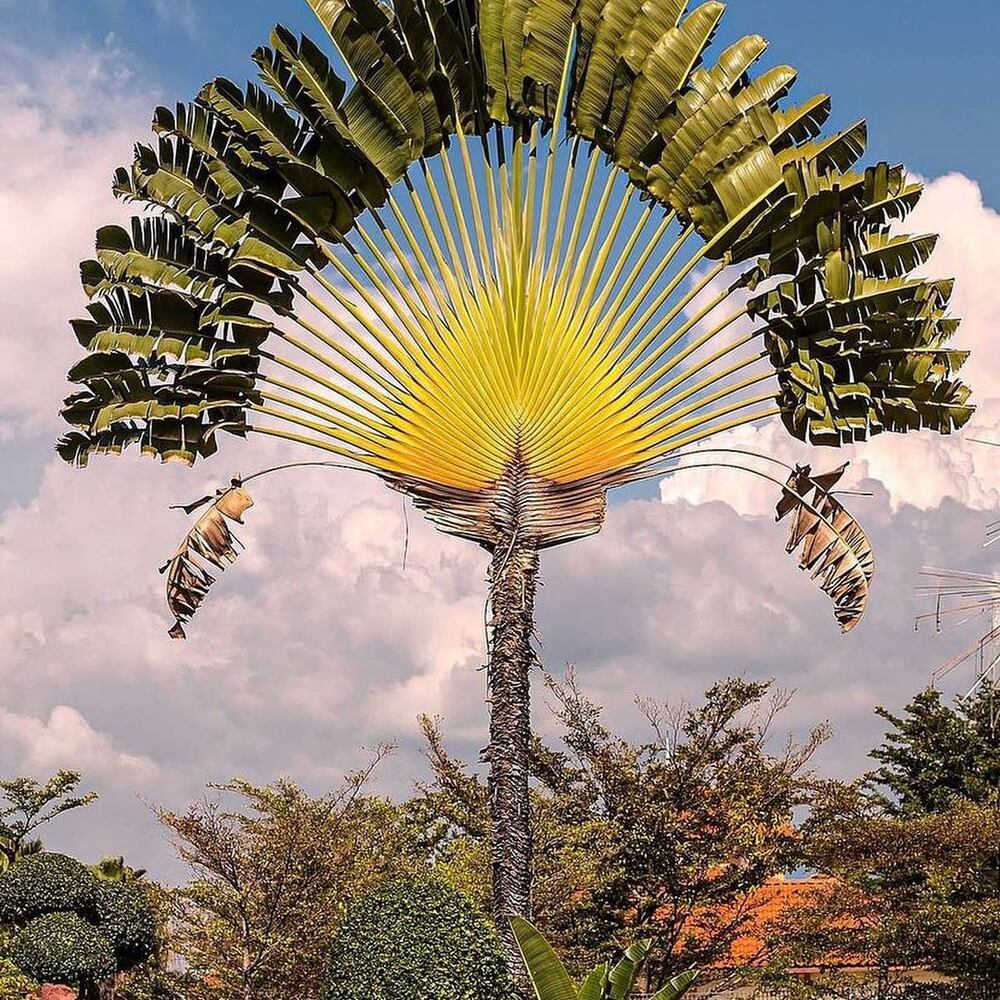
Travelers Tree Care - Watering
A Traveler's Palm is known for its high water demands, particularly during its initial growth stages. Regular watering helps establish a strong root system, especially in the dry season. As the palm matures, its huge leaves will harvest rainwater, reducing the need for frequent watering.
Aim to keep the soil consistently moist but not waterlogged, as excessive moisture can lead to root rot. During prolonged dry spells, increase watering to maintain the plant's health. Understanding the watering needs of your Traveler's Palm ensures it remains in excellent condition throughout its life.
Travelers Tree Care - Fertilization and Mulching
To promote a moderate pace of growth, apply a balanced, slow-release fertilizer during the growth season. Fertilizing in spring, summer, and autumn supports the tree's nutrient needs, enhancing its vitality. In addition to fertilization, apply mulch around the base to retain moisture and suppress weeds.
Mulching not only conserves soil moisture but also improves its structure as it decomposes, providing additional nutrients. Remember to keep the fertilization and mulching routine consistent.

Travelers Tree Care - Pruning
Routine pruning helps maintain the tree's aesthetic and health. Although the Traveler's Palm tree doesn't require extensive pruning, removing long stems or damaged leaves is always good. Pruning encourages new growth and prevents the accumulation of debris, reducing the risk of pest infestations.
Regular inspection and maintenance allow you to address any issues promptly, ensuring the Traveler's Palm remains an attractive and thriving element of your landscape. Talking of landscape designing, we have something specially featured for Pennsylvania homeowners interested in exploring and experimenting with modern gardening and landscape design, do give it a read!
Common Pest and Diseases with Travelers Palm Trees
Traveler's Palm is generally resistant to pests and diseases, but vigilance is necessary to protect it from potential threats. Common pests, such as aphids, scale insects, and mealybugs, can occasionally target the plant.
Implementing preventative measures, such as regular inspections and natural remedies, helps maintain plant health. For severe infestations, appropriate insecticides may be necessary to eliminate the issue. Addressing these challenges proactively ensures your Traveler's Palm remains healthy and free from harm.
How to Propagate the Traveler's Palm Tree
Ravenala madagascariensis is best propagated through its seeds. This method, while requiring patience, ensures a healthy start for new plants. Follow these steps for successful propagation:
- Gather the Seeds: Monitor the seed pods of the palm tree. Once they turn brown, they are ready to burst open. Collect the seeds from these pods to begin the propagation process.
- Seed Preparation: The seed has a hardy outer shell that requires softening to aid germination. This can be done by soaking the seeds in warm water for 24-48 hours or gently sanding the surface with sandpaper.
- Planting the Seeds: Fill trays with a well-draining potting mix and plant the prepared seeds. Ensure the medium is rich in nutrients to support initial growth.
- Consistent Watering: Keep the soil consistently moist but avoid overwatering to prevent waterlogging, which can lower germination success.
- Germination Patience: Be patient, as Ravenala madagascariensis may take several weeks or even months to germinate. Persistence will eventually reward you with strong seedlings.
- Transplantation: Once the seedlings develop enough leaves and are strong, transplant them to your desired location. Follow the care guidelines outlined earlier to ensure healthy growth.
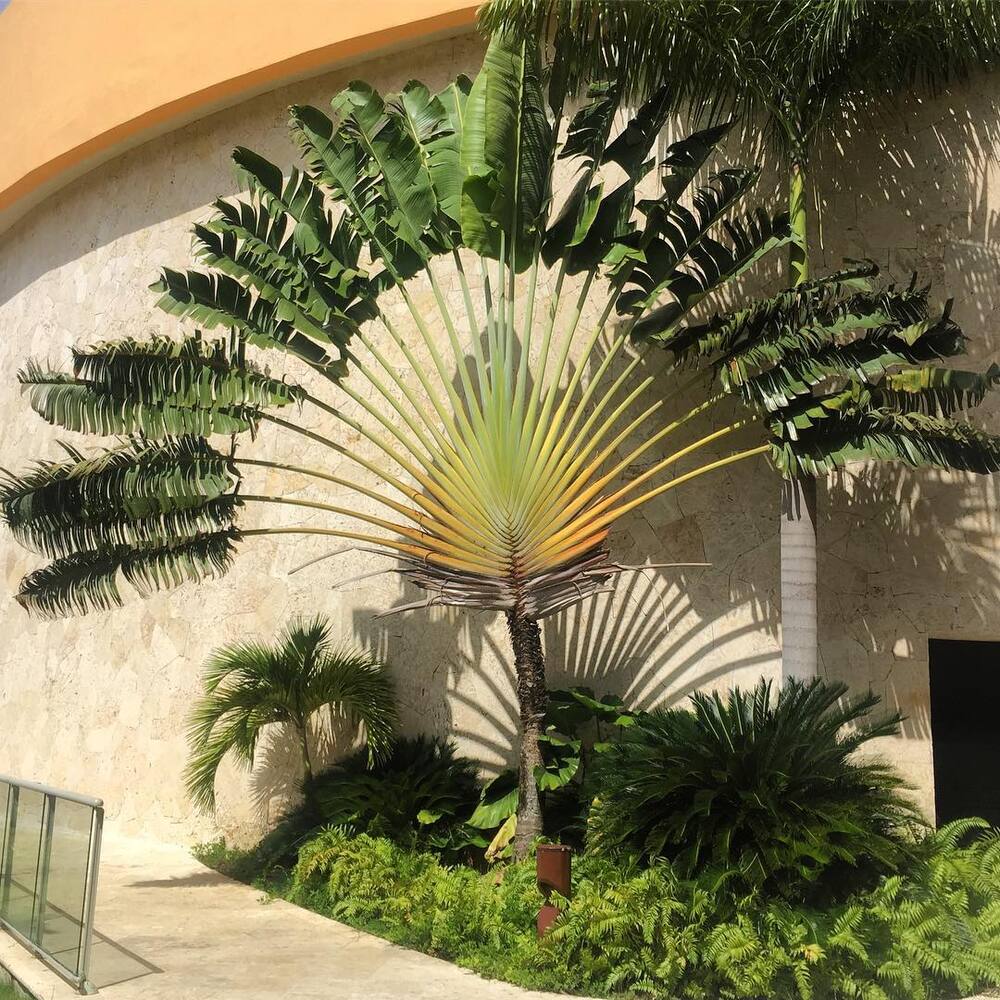
Although it may take years for the Traveler's tree to achieve its full tall stature, the resulting form will be a striking addition to your landscape, providing the lush, green backdrop that plants and gardens benefit from. Ensuring ample space during propagation will prevent any inhibition to growth, allowing the Traveler's Palm to flourish with comfort.
Want to know more about other types of palm trees? Check this article out!
Header image by @Plantsnap Featured Image by@Alex Palignawan

